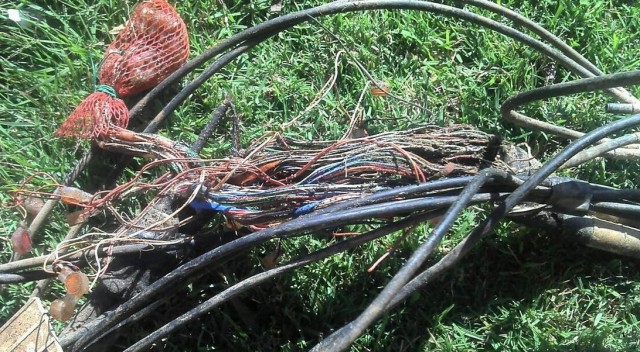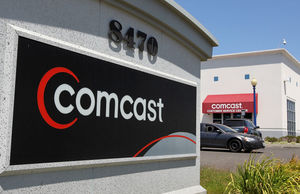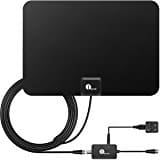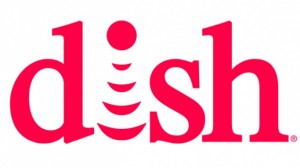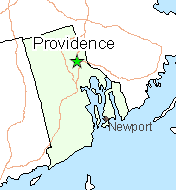 A business news service that has traditionally supported private, free-market business interests has called on the government to declare broadband essential for navigating daily life and to get more involved in assuring every American has access to it.
A business news service that has traditionally supported private, free-market business interests has called on the government to declare broadband essential for navigating daily life and to get more involved in assuring every American has access to it.
The editorial board of Bloomberg News published an extraordinary opinion piece this morning urging government involvement and oversight to resolve the rural broadband gap once and for all.
It is often said that internet service, like electricity or water, should be treated (and regulated) more like a public utility. Without wading into the contentious and long-running debate about that, it’s easy enough to point out that the government can do more, at the margins, to help bring better internet service to places where the market hasn’t. Fast internet service is to the 21st century what a telephone line was to the 20th: essential to navigating daily life.
The editors point out that 39% of rural America — 23 million people — still lack suitable internet access despite years of speeches from politicians, targeted or restricted-use public funding, government grants, and public-private “partnerships.”
Bloomberg rightly calls out the biggest impediment to rural broadband expansion — funding for last-mile infrastructure projects that actually deliver broadband service to unserved homes and businesses, not just public institutions or exclusive office parks. Because private phone companies (and to a lesser degree cable operators) either do not want the funding to come with strings attached or seek taxpayer funds to transfer the cost of rural investment away from shareholders and on to the government, the results have been patchy service and scandals.
Some companies, like Verizon, have shown almost no interest in government subsidies to further expand DSL service into its most rural territories. Others, like Frontier Communications, are aggressively seeking funding to defray the cost of wiring rural areas and, alleges one government oversight report, discovered a ‘revenue opportunity’ for itself along the way.
A report by the U.S. Commerce Department’s Office of Inspector General alleged Frontier has become an expert on gaming the system with padded invoices that overcharged a federal grant program $4.7 million dollars. Company employees reportedly even boasted about their ability to creatively ripoff taxpayers:
The scathing, 31-page report declared the payments “unreasonable” and “unallowable.” Meanwhile, Frontier saw the tacked-on charges as a “revenue opportunity,” according to an internal company email cited in the report. Frontier employees referred to the extra fees as “markups” and “profit.”
 Bloomberg’s editors think the FCC should keep rural broadband expansion funding simple and avoid favoring one technology over another. Various grant programs have failed in the past because they are exceptionally specific about the kinds of technologies that qualify for funding, set unreasonable deadlines, improperly vet the financial capabilities of applicants, and attract some applicants that tailor-write applications to fit funding opportunities instead of creating sustainable and meaningful projects that can remain solvent and operating after the grant funding ends.
Bloomberg’s editors think the FCC should keep rural broadband expansion funding simple and avoid favoring one technology over another. Various grant programs have failed in the past because they are exceptionally specific about the kinds of technologies that qualify for funding, set unreasonable deadlines, improperly vet the financial capabilities of applicants, and attract some applicants that tailor-write applications to fit funding opportunities instead of creating sustainable and meaningful projects that can remain solvent and operating after the grant funding ends.
The different approach advocated by Bloomberg calls on the government to set goals and benchmarks and avoid micromanaging how applicants achieve them. For example, Bloomberg supports the FCC’s 25Mbps minimum definition of broadband, but could care less how providers deliver that speed to rural consumers — via satellite, cable, or something else. It also thinks the current grant system favors incumbent rural phone companies and that has not benefited consumers. Bloomberg’s editors believe startups can bring innovative solutions to rural broadband problems that rural phone companies may not have the ability or flexibility to deliver themselves.
Some comments on the piece believe Bloomberg can find its “win-win” solution to the problem by targeting funding on rural, member-owned energy and telephone co-ops, instead of investor-owned utilities like Frontier, CenturyLink, and Windstream.
“The same entities that were responsible for bringing power to rural areas would be the perfect vehicle for stringing internet cable to those same customers,” wrote one commenter. “Namely, the rural electric co-ops who continue to serve this vital need.”


 Subscribe
Subscribe

